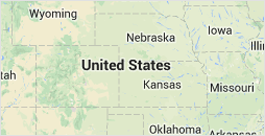Jeson Clarke
PHONE NUMBER : ------
Map

What is a Flap-Based Thrust Vectoring VTOL?
Vertical takeoff and landing (VTOL) technology has been used in the aviation industry since shortly after WWII, but the idea for VTOL aircraft actually dates back to the early 1900s. Today, all VTOL aircraft achieve flight by lifting off the ground using thrust. Rotors create this thrust to propel the craft upward, and once airborne after achieving lift using wings, the rotors are turned to propel the craft forward.
Some VTOL aircraft, including some eVTOL aircraft, use flap-based thrust vectoring. This is a type of thrust system in which adjustable flaps are used to direct the thrust generated by the rotors. Vectoring in aviation is a term used to explain the direction or course of something. Thus, flap-based thrust vectoring is the use of flaps to direct the thrust created by the rotors of a VTOL or eVTOL aircraft. Experience the future of urban mobility with our advanced EVTOLs - Visit this website and redefine your perception of efficient and innovative transportation!
What are the Benefits of Flap-Based Thrust Vectoring?
One of the largest advantages flap-based thrust vectoring offers is tighter control over the movement of an aircraft. In a traditional VTOL aircraft, the rotors create a wide force that moves the aircraft forward. This can work fine for most situations, but some takeoff and landing scenarios require a tighter area of focus for the thrust. Using a flap-based system, the direction of the thrust can be closed off into a tighter area. This allows pilots to achieve greater accuracy during takeoff, landing and in the air.
Where is Flap-Based Thrust Vectoring Used?
Although commercial aircraft can use flap-based thrust vectoring, it is often used in military applications. Aircraft like the F-22 Raptor utilize thrust vectoring to achieve greater maneuverability in the air. This technology can also be used in combat situations to help pilots control takeoff maneuvers on surfaces that have been damaged by battle.
The military also employs these designs since maintaining the components in a flap-based system can require less work. There are fewer mechanical complexities involved in the operation of thrust vectoring compared to conventional propeller systems. Additionally, servo installation is easier, making a flap-based thrust vectoring aircraft easier to service, design and build.
Author Resource:-
Jeson Clarke is providing info about sustainable aircraft making for air travel faster, smoother and more affordable than ever. You can find his thoughts at commercial VTOL blog.
